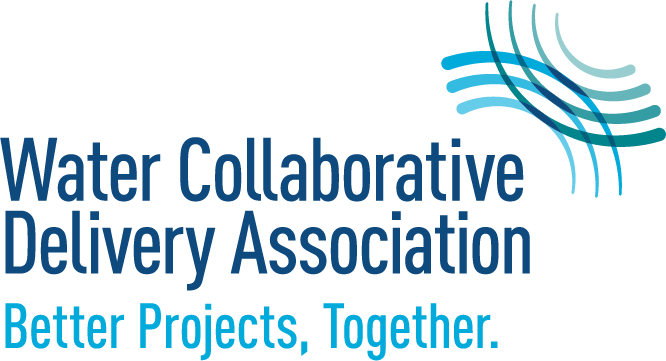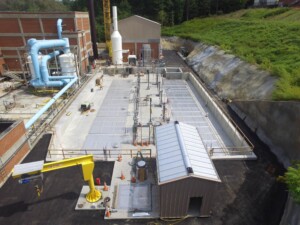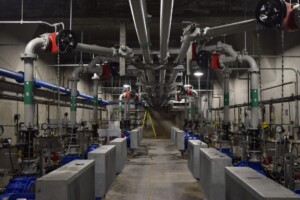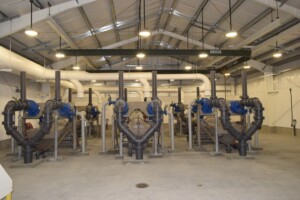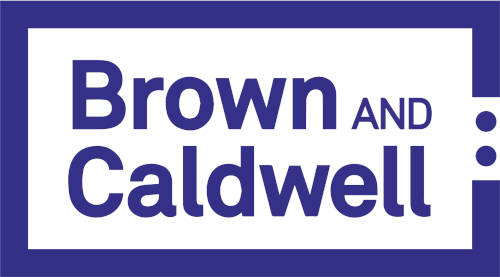Challenge
The RM Clayton WRC facility treats an average daily flow of 122 mgd with peak flows frequently exceeding 240 mgd. The plant is designed for 320 mgd. The headworks facility currently collects and treats flow from an aging, combined sewer system that routinely contains large quantities of grit that are difficult to remove. To help mitigate the harmful effects of grit accumulation throughout the plant, the City of Atlanta required a team that could offer immediate grit relief solutions as well as a new headworks facility to provide long-term reliability.
The project was procured through a single-step RFP using a best-value selection process. The owner hired an owner’s representative to develop the RFP documents, which provided prescriptive requirements for many areas of the plant and allowed for innovation in others.
With this project’s schedule demands, using the collaborative delivery model was vital to its success. With a primary goal of providing a rapidly implementable, reliable long-term solution, the design-build team relied on design-build best practices throughout the project, including:
• Selecting a team and defining roles early to maximize collective focus on solutions
• Using clear and appropriately balanced contracting language that set the project up for immediate execution upon notice to proceed
• Training team members on the advantages of the design-build model and explaining their roles in the collaborative process
• Employing an equitably balanced project risk assessment and mitigation process rom initial design through procurement, construction, and commissioning
• Setting expectations for communication and for issue resolution at the lowest possible level; facilitating efficient decision making through refined processes and advanced tools like 3D modeling
• Co-locating design, management, and construction resources for rapid input, ongoing innovation, and timely decision making; including the owner and plant operations staff as needed
• Developing and implementing clear requirements for performance testing and commissioning to ensure a smooth transition to operations
By creating open communication, trust, and accountability, these best practices supported the development of innovative alternatives, accelerated design, and enabled early procurement of specialized equipment.
Approach
No disputes were experienced on this project due to a partnering mindset and a determination to identify and resolve issues at the lowest possible level. The team focused on open, “no surprises” dialogue between all design-build team members and the owner, and on mitigating problems and addressing disagreements before they impacted project cost or schedule.
Methods included:
• Assigning team leaders and members to the project who had established relationships with the City’s team and a keen understanding of their
expectations and processes
• Defining clear contractual expectations with the City and all subcontractors
• Establishing clear roles, with appropriate delegation of authority (including stop-work authority)
• Implementing formal and informal partnering, including an executive- and field-level communication “zipper” plan for issue resolution
• Holding discipline-specific design task force teams involving designers, builders, subject matter experts, and the owner’s engineering and O&M staff to identify and address detailed concerns early in design
• Using a four-square issue matrix during executive partnering sessions as a communication and decision-making tool to broadcast and track key issues, as well as to identify positive trends
Results
Western Summit Constructors, Inc. (Kiewit) and Brown and Caldwell’s solutions provided both immediate and long-term relief from an ongoing, chronic grit-removal challenge while improving facility reliability and mitigating impacts to downstream unit operations.
The solution saved the City of Atlanta thousands each year in O&M costs through implementation of grit removal and screening equipment that requires minimal oversight and maintenance attention. The project also included the installation of covers for the head cells to reduce potential odor complaints from the community.
The design-build team delivered the design for the headworks improvements in only seven months, while including more than 16 adjustments in the design based on a series of owner requested changes to improve the performance of the facility.
The approach to adding value to the community included a focus on meaningful employment of local labor and subcontractors, including a significant number of DBE firms that contributed to the attainment of the City’s 30% DBE goal. The team performed significant DBE outreach, and anytime the project needed to hire labor for the project, the team worked with the City’s First Source jobs program.
The project was the recipient of a 2018 Design-Build Institute of America (DBIA) National Excellence Award in the water/wastewater category. DBIA’s annual award program promotes exceptional diversity in project size, sector, and geography while celebrating the innovative and collaborative teams who produce design-build projects that inspire.
Other WCDA member firm involved: Xylem, Inc. (supplier of centrate and sludge pumps)
“The City of Atlanta is very pleased with the outcome of this design-build project. The headworks improvements will now improve screening and grit removal units to alleviate adverse effects to the downstream wastewater treatment processes, improve operational reliability, improve odor control, and help avoid violations of the City’s NPDES wastewater discharge permit. We are proud that the RM Clayton WRC Facility now operates the largest multi-tray grit system in the world. The design-build team exceeded our expectations in the collaborative, problem-solving nature and innovative technical and delivery solutions they brought to the permitting, design, construction, and startup of this important project.”
— Robert A. Bocarro, Deputy Commissioner, City of Atlanta Department of
Watershed Management
